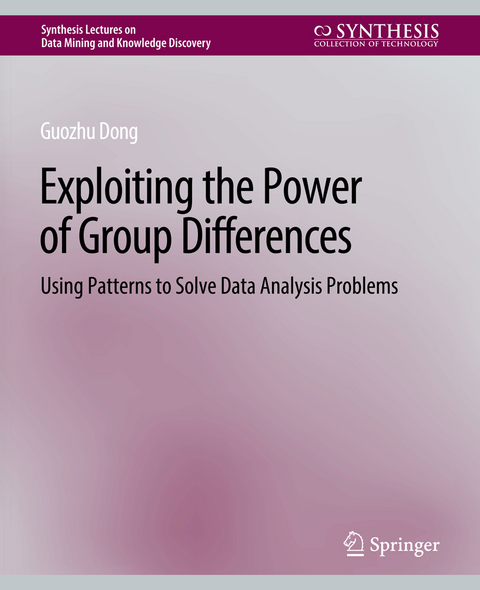
Exploiting the Power of Group Differences
Springer International Publishing (Verlag)
978-3-031-00785-9 (ISBN)
Dr. Guozhu Dong is a professor of Computer Science and Engineering, and a member at the Knoesis Center of Excellence, at Wright State University. He received a Ph.D. in Computer Science from the University of Southern California and a B.S. in Mathematics from Shandong Univerity. Before joining Wright State University, he was a faculty member at the University of Melbourne. His research interests span data mining, machine learning, databases, data science, bioinformatics, and artificial intelligence. He co-authored a book on Sequence Data Mining, co-edited two books on Contrast Data Mining and on Feature Engineering, respectively, and authored a book on Exploiting the Power of Group Differences. He is known for his pioneering work and sustained effort on emerging/contrast pattern mining and on the use of such patterns in problem solving. He has published hundreds of papers at major international conferences and in top-rate journals in the fields of data mining and databases. He received several best research paper awards at major data mining conferences. At Wright State University, he was recognized for Excellence in Research in his college. He has served on hundreds of program committees of international conferences, and he has chaired the program committees for several such conferences. He is a senior member of both ACM and IEEE.
Acknowledgments.- Introduction and Overview.- General Preliminaries.- Emerging Patterns and a Flexible Mining Algorithm.- CAEP: Classification By Aggregating Multiple Matching Emerging Patterns.- CAEP for Classification on Tiny Training Datasets, Compound Selection, and Instance Selection.- OCLEP: One-Class Intrusion Detection and Anomaly Detection.- CPCQ: Contrast Pattern Based Clustering-Quality Evaluation.- CPC: Pattern-Based Clustering.- IBIG: Ranking Genes and Attributes for Complex Diseases and Complex Problems CPXR and CPXC: Pattern Aided Prediction Modeling and Prediction Model Analysis.- Other Approaches and Applications Using Emerging Patterns.- Bibliography.- Author's Biography.- Index.
| Erscheinungsdatum | 06.06.2022 |
|---|---|
| Reihe/Serie | Synthesis Lectures on Data Mining and Knowledge Discovery |
| Zusatzinfo | XIII, 135 p. |
| Verlagsort | Cham |
| Sprache | englisch |
| Maße | 191 x 235 mm |
| Gewicht | 293 g |
| Themenwelt | Informatik ► Datenbanken ► Data Warehouse / Data Mining |
| Informatik ► Theorie / Studium ► Künstliche Intelligenz / Robotik | |
| Mathematik / Informatik ► Mathematik | |
| ISBN-10 | 3-031-00785-9 / 3031007859 |
| ISBN-13 | 978-3-031-00785-9 / 9783031007859 |
| Zustand | Neuware |
| Informationen gemäß Produktsicherheitsverordnung (GPSR) | |
| Haben Sie eine Frage zum Produkt? |
aus dem Bereich


